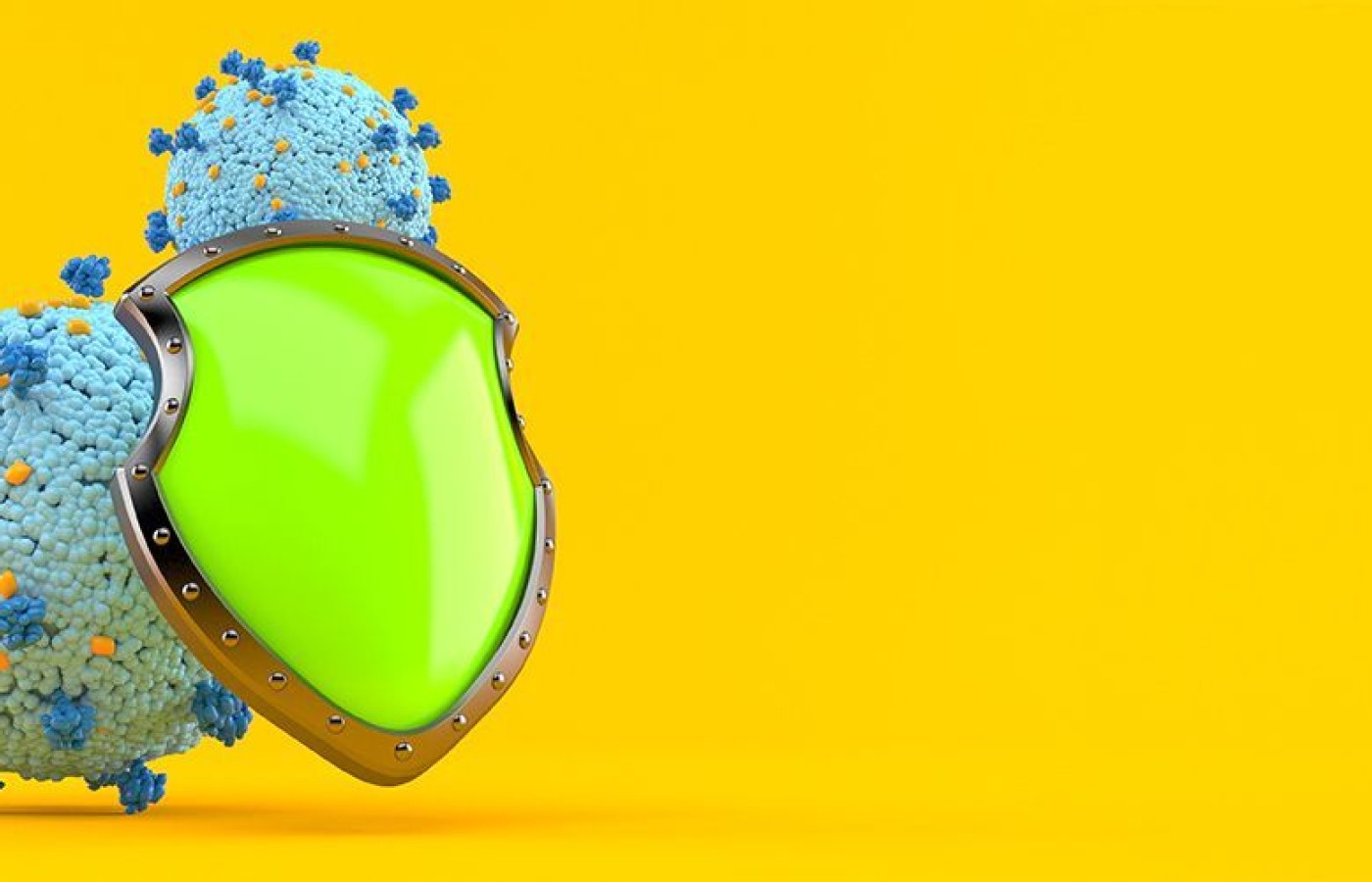As a practitioner, you know foot pain should be addressed as soon as possible, as pain in one or both feet can potentially lead to impairment of foot function. But rather than treating foot pain with over-the-counter pain and anti-inflammatory medications such as ibuprofen, or prescription nonsteroidal anti-inflammatory drugs (NSAIDs), or even corticosteroid injections for chronic foot pain, why not try red light / infrared therapy?
Coronavirus Concerns: How to Enhance the Body's Resilience
The news media tends to transmit a coronavirus message that is not properly contextualized. Let's say, for example, that the full extent of being infected with the coronavirus meant you fell sick for three days and then recovered without ill effect. Even if everyone got infected, it would only be a minor three-day inconvenience. We know this is not the outcome scenario for the coronavirus; however, the pandemic message we are exposed to leads people to assume the coronavirus is as deadly as the bubonic plague. In fact, most people recover from the coronavirus without ill-effect.
With the above in mind, people should know and understand who is at risk for complications when infected by the coronavirus, or any other virus for that matter. Knowing this gives one a locus of control, no matter if our society is overreacting or properly reacting. Not surprisingly, older adults are at greater risk of dying from the coronavirus, which is the same for the flu and other viral infections. It is important to understand which old people are at greater risk.
Understanding the Inflamed State

I recently went into a local Walgreens and noticed many old people buying various items. Many of these people were clearly unhealthy; they were old, obese, buying cigarettes, soda and ice cream, and moving at an exceptionally slow pace. In other words, these people were in their mid- to late-70s or older and were obese, diabetic, hypertense, and had respiratory and cardiovascular disease. Frankly, many of these people looked as if they were dying. This is called pro-inflammaging. (I did not make this term up. If you Google "inflammaging," multiple legitimate scientific papers will appear.)
I have been following the inflammaging research since about 2005. The earliest paper I read on the topic was published in 2000.1 In short, we can either anti-inflammage or pro-inflammage, the latter being associated with far worse health prospects after an injurious or infectious event. To be clear, people who are pro-inflammaging are those at the greatest risk for dying from chronic diseases, such as diabetes, heart disease, cancer and Alzheimer's disease, and these are the same people who are at the greatest risk of dying from a viral infection.
I see far more 70-year-old pro-inflammagers on airplanes than I witnessed walking around at the Honda Classic PGA golf tournament I went to in February of this year. This is because pro-inflammagers avoid physical activity because it is too stressful for them, which means it adds to their flame. Imagine being so inflamed that normal physical activities make you feel unwell. These are the people who are more likely to develop complications or die from a viral infection, which is known to be caused by what is called a cytokine storm.2
Cytokines are proteins released in excess by immune cells during an immune challenge. The majority of cytokines are pro-inflammatory, the most well-known being interleukin-1 (IL-1), interleukin-6 (IL-6), interleukin-17 (IL-17), and tumor necrosis factor (TNF). Notably, IL-6 is the key cytokine that drives up high-sensitivity C-reactive protein (hsCRP), so an inexpensive way to screen for excess cytokines is to measure hsCRP, which should be below 1 mg/L. As hsCRP levels climb above 1 mg/L, this means the body is becoming incrementally more inflamed. The average hsCRP level in middle-aged (age 30-60) Americans is 1.5 mg/L.
An hsCRP level between 1-3 mg/L means you would be mildly to moderately inflamed. A full 25 percent of the total U.S. population has an hsCRP level greater than 3 mg/L,3 which means almost 82 million are more than moderately inflamed and at greater risk for developing all chronic diseases (heart disease, cancer, diabetes, etc.) or already suffering with one or more of these diseases.
These same "flamers" are also at a much greater risk for developing severe complications or death from any bacterial or viral infection.4-5
Why Inflammation Matters for COVID-19 and Other Viruses
Few people have the above information in mind when they ask about what they can do to protect themselves against a viral infection. Even worse, most people do not properly contextualize what it means to be "protected against a viral infection." The key is to have a "deflamed" immune system, which means our immune cells are not pumping out an excess of pro-inflammatory cytokines. In a deflamed state, the immune system has the capacity to properly regulate the release of both pro-inflammatory and anti-inflammatory cytokines to maintain homeostasis.
In contrast, when we have an inflamed immune system, with CRP levels above 3 mg/L, immune cells are pumping out pro-inflammatory cytokines well above normal levels, which can develop into a cytokine storm when exposed to COVID-19 or any other virus.
Boosting Your Body's Resilience: Simple Steps
So, the first thing one can do is to honestly look at themselves. Are you one of the 70 percent of Americans who is either obese or overweight? If you are, you are mildly, moderately or highly inflamed.
In this case, the first step to make your body more resilient is to eliminate refined sugar, flour and oil calories from the diet. Eat only whole foods at a caloric level to promote body fat loss. This need not be a starvation diet, as most people can readily drop body fat if they eat 1,200-2,000 calories per day. If you eat large amounts of vegetation with your meat, fish, chicken or whatever you like, you can drop your caloric intake down into the weight- / fat-loss range and not feel annoyed by hunger pangs.
The first day one begins to deflame their diet, as I call it, there is a downtick of inflammation, which continues so long as one continues to eat a whole-food diet restricted in calories. The improvement in inflammation can be quite dramatic.
It will likely take the rest of this year and perhaps into 2021 before we are clear of the coronavirus situation, so if people normalize their inflammatory state in five months or less, they can substantially improve their resiliency during the remainder of this current viral crisis.
In addition to a whole-food diet that is adequately restricted in calories, people need to increase physical activity to a toleration level, and preferably do this outdoors in the sun and fresh air. Doing so will add to the inflammation reduction that occurs with caloric restriction, as exercise is well-known to reduce inflammation.
Maintaining a healthy mental outlook is also very important. We should understand that the government's media reaction to the coronavirus failed to contextualize the problem, which can lead some people to be more mentally stressed out than they should be. When we are told about deaths and people on respirators, we are simultaneously not told that most of these people are highly inflamed.
By not properly contextualizing who is at risk, people can experience fear, panic and worry, and they begin to catastrophize, all of which represent inflammatory states that increase the risk of having a more severe reaction to a viral infection.6 So, we need to get our stress-induced inflammation levels under control to help control viral infection severity.
Supplements can also be helpful to varying degrees and this also must be appreciated in the proper context. People would rather take a few supplements to address a health problem instead of improving their diet and increasing physical activity. In short, the odds that supplements will deliver meaningful improvements is low if an individual is already highly inflamed.
I think the best mindset for supplementation is to reduce the inflammatory state to normal so immune cells react in a properly measured fashion during a viral infection. As stated previously, complications from a viral infection are caused by a hyperinflammatory cytokine storm. We are less likely to suffer a cytokine storm if we are in a deflamed state prior to a viral challenge.
The most common supplements that have been highlighted as being possibly helpful against the coronavirus are the same ones people typically use during the regular cold and flu season: vitamin D, vitamin C and zinc.7 Additional supplements that may be beneficial include lipoic acid, selenium, and omega-3 fatty acids from fish oil.7
Fortunately, taking these supplements at the typical recommended amounts poses no harm and they are commonly taken by many people on a regular basis for health-promotion purposes. Their main mechanism of action involves the modulation of inflammation, which is obviously desirable to protect against a hyperinflammatory response if one is exposed to a viral pathogen.
Not surprisingly, nutrient supplements are most helpful for people who are deficient in those nutrients. In other words, if I have adequate vitamin D levels, taking more vitamin D will not likely have additional benefits. However, in the case of vitamin D, most people do have depressed levels, so vitamin D supplementation may be beneficial for a substantial sector of the population.
My suggestion would be for people to get their vitamin D levels checked as soon as possible and supplement accordingly to get 25(OH)D levels to at 50 ng/mL or higher. This typically involves supplementing with about 5,000-10,000 IU of vitamin D3 per day. In short, adequate vitamin D levels help to deflame immune cells so they pump out less pro-inflammatory cytokines.8
Following the recommendations in this article can help to reduce the inflammatory state and make one more resilient when faced with a robust inflammatory challenge, such as the seasonal flu virus, the coronavirus, an unexpected injury or a psychologically traumatic event. In other words, an anti-inflammatory lifestyle is the best choice no matter what type of health challenge we are faced with.
References
- Franceschi C, Bonafe M, Valensin S, et al. Inflamm-aging. an evolutionary perspective on immunosenescence. Ann N Y Acad Sci, 2000; 908:244-54.
- Liu Q, Zhou Y, Yan Z. The cytokine storm of severe influenza and development of immunomodulatory therapy. Cell Mol Immunol, 2016;13:3-10.
- Ridker PM. C-reactive protein: a simple test to help predict risk of heart attack and stroke. Circulation, 2003;108:81-85.
- Seaman D. "How to Protect Yourself Against the Deadly Coronavirus": www.youtube.com/watch?v=yNxrVvpkUBU&t=19s.
- Seaman D. "Obesity Increases Coronavirus Severity": www.youtube.com/watch?v=MvJ91rt4AFA&t=9s.
- Seaman D. "Panic, Catastrophizing, and the Coronavirus": www.youtube.com/watch?v=KzdRFy58qd4&t=2s.
- Zhang L, Liu Y. Potential interventions for novel coronavirus in China: a systematic review. J Med Virology, 2020;92:479-90.
- Seaman D. "Vitamin D, Immune Function and Chronic Inflammation": www.youtube.com/watch?v=u3eVS0h3QqU&t=122s.



